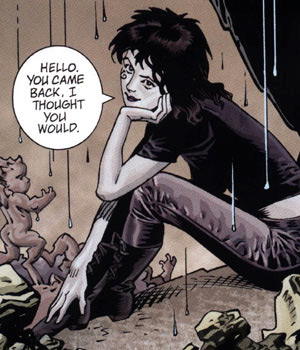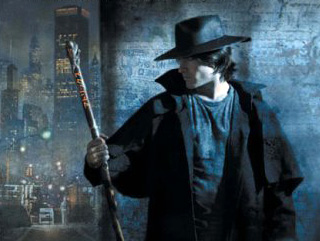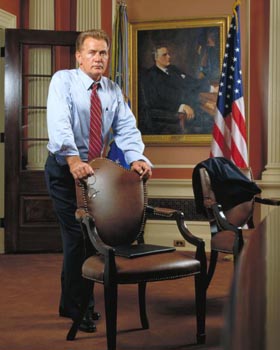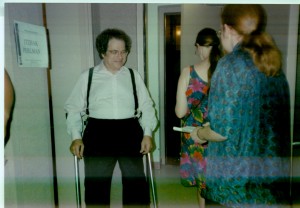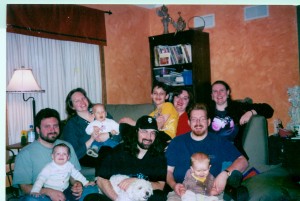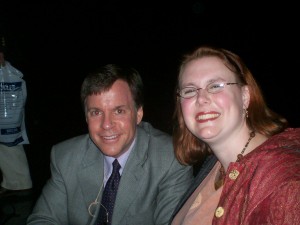 AV Club, Political Science
AV Club, Political Science  No Comments
No Comments A Government of the People
I think we can all agree on the winner of last night’s first presidential debate:
Big Bird.
Seriously, more than the President’s apparent NyQuil mishap, or the former governor’s faulty truth software, or the tragic demise of both Jim Lehrer’s moderator cred and the formal debate format, it’s Romney’s comment about getting rid of Big Bird when he would defund the Corporation for Public Broadcasting that’s blown up my social media feeds today. If Joe Biden doesn’t say “Bin Laden is dead and Big Bird is alive!” at next Thursday’s veep debate, he’s missing a great opportunity.
But that got me thinking. We’re big PBS and NPR fans in the Banks household, and the way I see it, the takeover of the federal government by the combined talents of those two organizations could only improve life for us all.
So here’s my plan for the new, improved CPB American government: Calm, Patient, Brilliant.
THE EXECUTIVE BRANCH
I think a Garrison Keillor/Carl Kasell ticket is just the thing to bring dignity, truth, and mildly humorous storytelling to the White House. Martha the Talking Dog could bring a new articulateness to the role of First Dog, and fill in as White House Press Secretary whenever Peter Sagal needed a break.
The Cabinet is where my plan truly shines. The Dowager Countess is an obvious pick for Secretary of State, as is Wordgirl for Education. Bob Vila‘s got Housing and Urban Development covered, and Bill Moyers would make a strong, moral, incorruptible Attorney General. Clifford the Big Red Dog will advance a “speak softly and carry a big stick” policy in his Department of Defense. Ken Burns gets the Department of the Interior, with its oversight of national parks, monuments, and natural resources. Helen Mirren/Jane Tennyson would be a ferocious head of Homeland Security. Click and Clack should do nicely for Transportation, as would the Antiques Roadshow folks for Commerce and the Victory Garden people for Agriculture. Marketplace could manage both Treasury and Labor, and the Frontline reporters have been with the soldiers all the way through the last 10+ years of warfare, so they’d a natural pick for Veterans Affairs. Martin Clunes/Doc Martin is good for Health and Human Services, especially coming from National Health Service as he does. And let’s give the NOVA guys the Department of Energy–at least they don’t think the cast of Dinosaur Train are the only source out there.
THE LEGISLATIVE BRANCH
My plan is beautiful in its simplicity for Congress. Over the years, I’d wager Masterpiece Mystery has killed off at least 541 people. If we include the perpetrators, that’s enough to field candidates for actual contested races in all those states and districts. For that matter, probably enough to completely staff the home and Washington offices.
Between the corpses and the criminals, we’ll achieve roughly the same levels of trust and productivity as the 112th Congress. And probably a better gender and minority balance.
THE JUDICIAL BRANCH
Sesame Workshop’s got this covered.


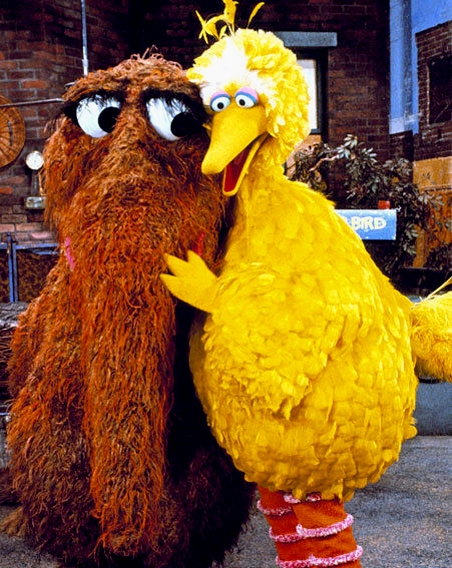

And, obviously, Nina Tottenberg continues to provide dramatic readings from the transcripts from this esteemed body.
A FEW LOOSE ENDS
 The Yip-Yip Aliens can only improve the FCC. Sid the Science Kid might be a bit young for the CDC, but at least he won’t treat it like a faith-based department. Bob Ross, bless his soul, would’ve ruled as director of the National Endowment for the Arts.
The Yip-Yip Aliens can only improve the FCC. Sid the Science Kid might be a bit young for the CDC, but at least he won’t treat it like a faith-based department. Bob Ross, bless his soul, would’ve ruled as director of the National Endowment for the Arts.
The Cyberchase kids should be outstanding at all the electronic surveillance over in the CIA. Terry Gross is a relentless interrogator who could whip the FBI into shape in a heartbeat. And Congressional Budget Office’s reports might take a little longer with Count von Count at the helm, but the constant thunder will comfort everyone that he’s always hard at work. Neil deGrasse Tyson already should be the head of NASA, so that’s a no-brainer.
And Curious George would definitely be a pro-legalization Drug Czar.
The CPB government will eliminate all personal income taxes, but you’ll have to deal with Fall and Spring pledge drives. The guilt trips will be epic, but between Austin City Lights, The Mark Twain Prize, and This American Life, there’ll be some outstanding programming twice a year to get citizens to chip in their fair share.
I’m sure there are many positions I’ve forgotten, or other excellent candidate for the posts I’ve named, so feel free to suggest your own in comments.
Wouldn’t it be nice to finally have a government for 100 percent of America? And commercial-free, too.
 But when tragedy strikes, as expected, in the movie, suddenly I’ve got a sobbing pile of six-year-old on my lap. His bony little shoulders are shuddering, and hot tears soak my collar. I stroke his hair and whisper to him that it’s okay, he’s safe, and I know it’s sad, but it’ll get better, until he slowly uncurls and starts watching again. He doesn’t leave the shelter of my arms until the credits begin to roll.
But when tragedy strikes, as expected, in the movie, suddenly I’ve got a sobbing pile of six-year-old on my lap. His bony little shoulders are shuddering, and hot tears soak my collar. I stroke his hair and whisper to him that it’s okay, he’s safe, and I know it’s sad, but it’ll get better, until he slowly uncurls and starts watching again. He doesn’t leave the shelter of my arms until the credits begin to roll. It happened when we went to see Chimpanzee at our favorite bargain theater last weekend. It happened when Claudia and Jamie spent their first lonely night in the Met, as I read From the Mixed-Up Files of Mrs. Basil E. Frankweiler. It’s happened at a variety of TV shows and movies at home.
It happened when we went to see Chimpanzee at our favorite bargain theater last weekend. It happened when Claudia and Jamie spent their first lonely night in the Met, as I read From the Mixed-Up Files of Mrs. Basil E. Frankweiler. It’s happened at a variety of TV shows and movies at home.

